Figures & data

Table 1. Monthly weather parameters during the study period at Kharagpur, India.
Table 2. SPAD-based timing of N application in rice.
Table 3. SPAD-based timing of N application in wheat.
Figure 1. Rice grain and straw yield under different N management practices during 2010 and 2011 (vertical lines indicate the standard error).
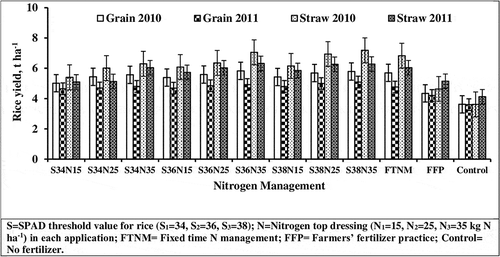
Figure 2. Wheat grain and straw yield under different N management practices during 2010–11 and 2011–12 (vertical lines indicate the standard error).

Figure 3. Relationship between grain yield and SPAD value at (a) active tillering, (b) panicle initiation and (c) flowering stages of rice; and (d) active tillering, (e) earhead initiation and (f) flowering stages of wheat (over 2 years' data).
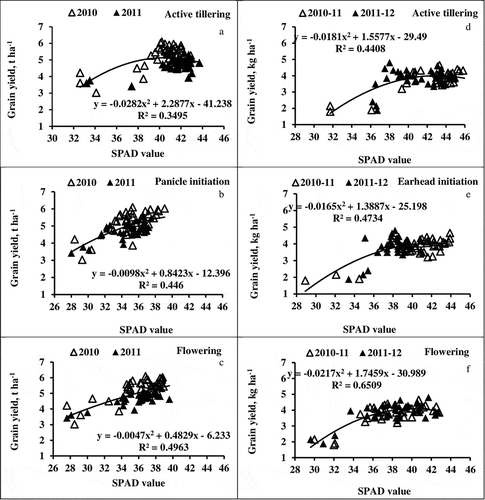
Figure 4. SPAD meter readings at different growth stages of rice under different N management practices.
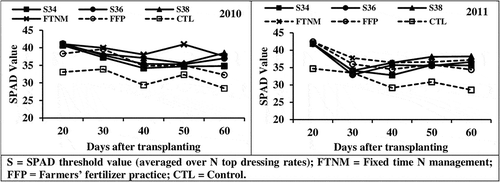
Figure 5. Leaf N content at different growth stages of rice under different N management practices (vertical lines indicate the standard error).
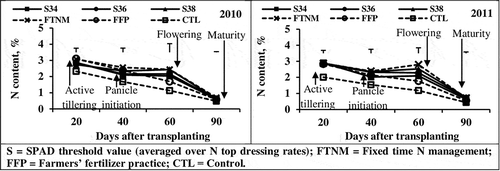
Figure 6. Soil available N status of 0–20 cm depth at different growth stages of rice under different N management practices (vertical lines indicate the standard error).
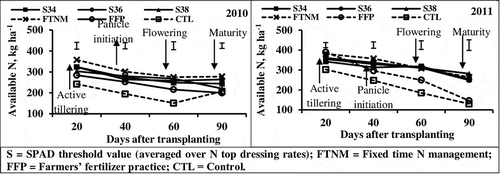
Figure 7. SPAD meter readings at different growth stages of wheat under different N management practices.
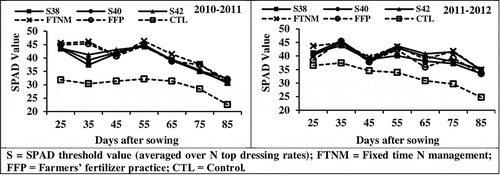
Figure 8. Leaf N content at different growth stages of wheat under different N management practices (vertical lines indicate the standard error).
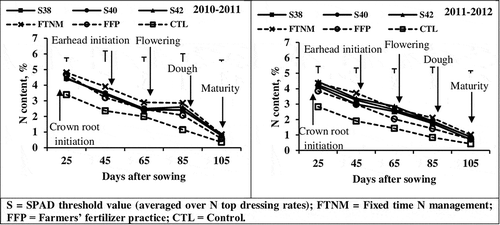
Figure 9. Soil available N status of 0–20 cm depth at different growth stages of wheat under different N management practices (vertical lines indicate the standard error).
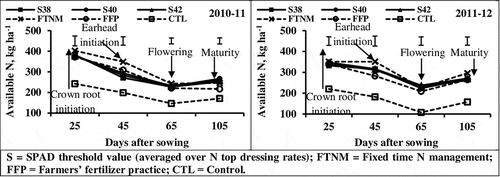
Table 4. Correlations among SPAD values, leaf N content, soil available N status and grain yield of rice (Over 2 years' data).
Table 5. Relationships between leaf N content and grain yield, leaf N content and SPAD value and leaf N content and soil available N at different growth stages of rice and desired leaf N, SPAD value and soil available N for maximum grain yield.
Table 6. Correlation among SPAD values, leaf N content, soil available N status and grain yield of wheat (over 2 years' data).
Table 7. Relationships between leaf N content and grain yield, leaf N content and SPAD value and leaf N content and soil available N at different growth stages of wheat and desired leaf N, SPAD value and soil available N for maximum grain yield.
Table 8. Agronomic N use efficiency (AEN), nitrogen recovery efficiency (REN) and partial factor productivity of applied N (PFPN) of rice grown under different N management practices (average data over 2 years).
Table 9. Agronomic N use efficiency (AEN), nitrogen recovery efficiency (REN) and partial factor productivity of applied N (PFPN) of wheat grown under different N management practices (average data over 2 years).